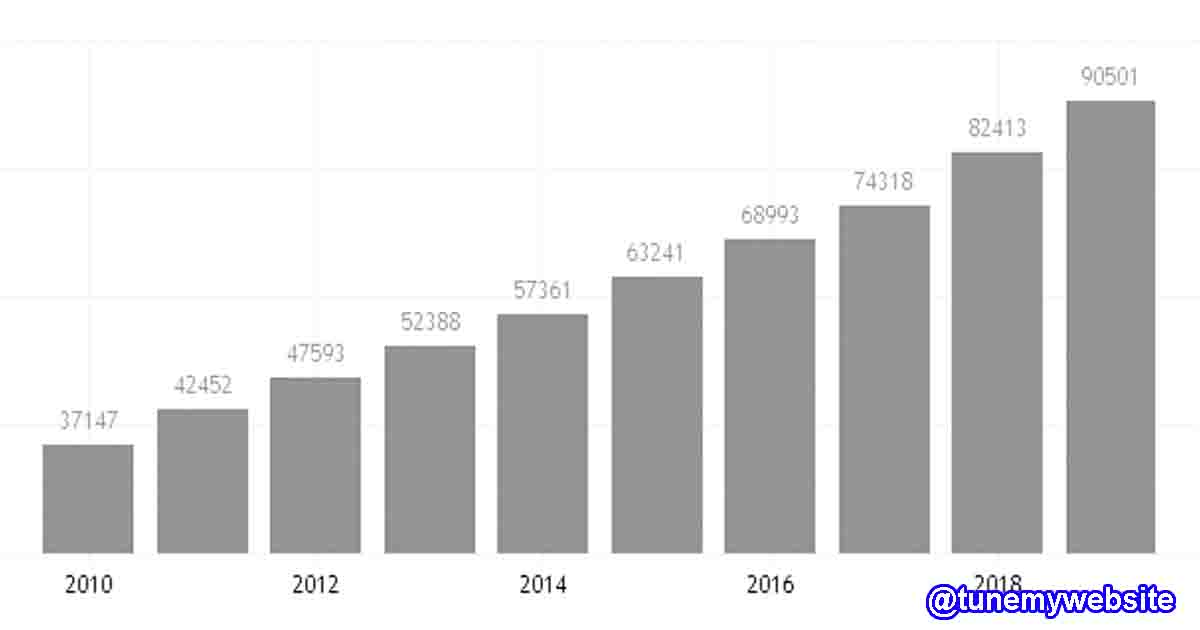China manufacturing activity rising exports 10-year high - China's assembling division extended again a month ago at the quickest pace since 2011 gratitude to sharp increments in both yield and new requests, and a lift in trade deals, inconspicuous since a year ago.
The Caixin/Markit producing buying supervisors' record (PMI), distributed one day in the wake of Beijing delivered its official check of processing plant movement, rose to 53.1 in August from 52.8 in July. The perusing was over experts' conjectures, as those surveyed by Bloomberg and Reuters anticipated that the record should complete the mid year at 52.5 and 52.6 correspondingly. The 50-limit isolates development from compression.
"The list has now ascended for four months straight, mirroring that the assembling segment kept on recuperating from the effect of the pandemic, and that the energy of the recuperation stayed solid," Dr. Wang Zhe, senior financial expert at Caixin Insight Group, said in an editorial going with Tuesday's report.
Positive execution of the key division was driven by extension of yield and new requests, which likewise observed the most amazing development in about 10 years. The aftereffects of the Caixin study, which is more centered around little and medium-sized organizations, indicated that Chinese plants recorded an expansion in new fare arranges just because this year as the Covid episode gave indications of log jam in certain nations outside China.
While work a stays in negative area for the eighth consecutive month, in August it edged nearer to adjustment, as per the Caixin/Markit information.
The discoveries of the Caixin overview were somewhat more certain than the official assembling PMI distributed by National Bureau of Statistics (NBS) on Monday. As indicated by authentic information, the assembling part kept on growing a month ago, by at a marginally more slow pace than in July. The official August non-fabricating PMI indicated proceeded with recuperation as the administration segment extended at the quickest pace since January 2018.
"Generally, the post-pestilence monetary recuperation in the assembling area proceeded. Flexibly and request extended with the pickup in abroad interest. Accumulations of work kept on expanding. Both amount of buys and supplies of bought things likewise developed," Wang included, remarking on the report.
China manufacturing activity rising exports 10-year high

China manufacturing activity rising exports 10-year high
More news:
Eurozone joblessness keeps on ascending notwithstanding facilitating of Covid limitations
The incomplete resuming of economies has neglected to support the positions market in Europe, with the occasionally balanced July joblessness in both the euro region and the EU in general moving to 7.9 percent and 7.2 percent individually.
As per Eurostat information delivered on Tuesday, almost 15.2 million individuals – of whom around 12.8 million are in the euro region – were jobless in July this year. This implies 336,000 additional people lost their positions over the 27 nations of the alliance, up 0.1 percent contrasted with the earlier month. In the eurozone alone, the quantity of jobless rose by 344,000, or 0.2 percent.
Tuesday's numbers show that adolescent joblessness likewise crept higher in July. The joblessness rate among those under 25 in the EU remained at 17 percent, with the euro zone marginally higher at 17.3 percent – up from 16.9 percent and 17.2 percent individually, as recorded in June.
The flood in joblessness comes in spite of the facilitating of Covid regulation measures, including permitting unimportant travel across Europe.
European economies have endured extraordinary stun due to Covid lockdowns, with the episode bringing about the most keen monetary withdrawal in the 19 euro-territory nations since records started in 1995. The eurozone economy shrank by 12.1 percent in the subsequent quarter, while the EU economy in general was down 11.9 percent.
Related:
'Most profound downturn of our lifetime': Coronavirus finishes Australia's record monetary development
Australia has become the most recent nation to authoritatively enter downturn - its first in very nearly 30 years - as the Covid emergency keeps on unleashing ruin far and wide.
The most recent Australian Bureau of Statistics figures, delivered on Wednesday, indicated that the country's (GDP) fell 7 percent over the June quarter. It was "the biggest fall in quarterly GDP since records started in 1959," said the Head of National Accounts at the office, Michael Smede.
The 7-percent constriction follows a 0.3 percent drop in the past quarter that finished in March. This implies the nation's economy has gone in reverse for two continuous quarters, meeting the boundaries of a specialized downturn.
The private segment, a lot of which was closed down or possibly fell under limitations because of endeavors to contain the spread of the infection, was one of the fundamental drivers of the decline. Private interest cleared out 7.9 rate focuses from GDP, driven by an enormous 12.1 percent plunge in family use. Spending on administrations fell 17.6 percent due to Covid limitations.
Financier Josh Frydenberg said the outcomes were predictable with Treasury figures, including that the administration had done "all that conceivable to pad the blow for the Australian economy" from the Covid episode.
"The present annihilating numbers affirmed what each Australian knows: That Covid-19 has unleashed devastation on our economy and our carries on with like nothing we have ever experienced previously" Frydenberg stated, including that there is a "street out" from the downturn.
Nonetheless, Shadow Treasurer Jim Chalmers contends that the absence of a legitimate positions plan may hamper the recuperation from "the most profound downturn of our lifetimes." According to the most recent information, more than 1,000,000 Australians are presently jobless, and the number may increment by another 400,000 by Christmas, Chalmers said.